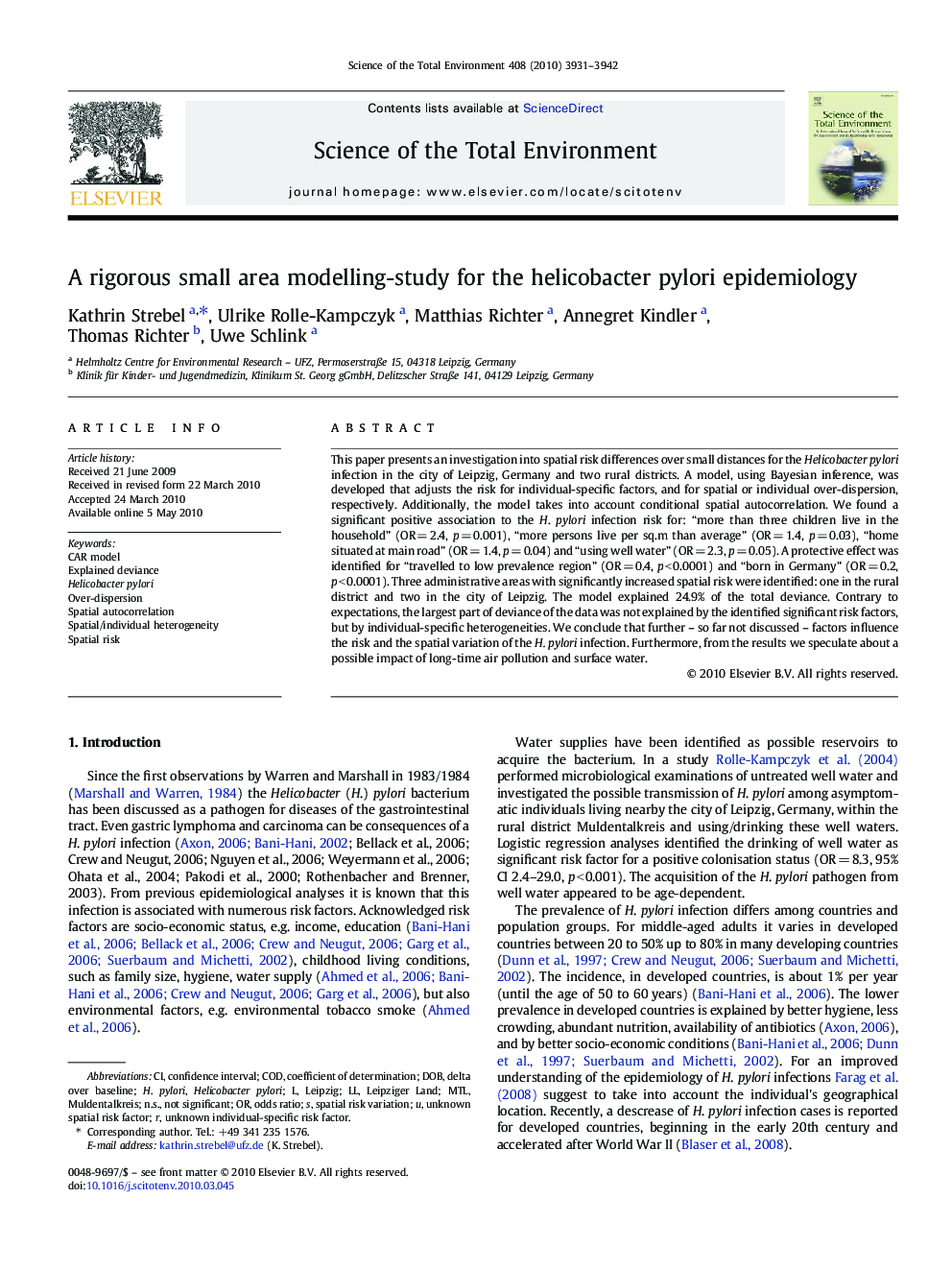| Article ID | Journal | Published Year | Pages | File Type |
|---|---|---|---|---|
| 4431021 | Science of The Total Environment | 2010 | 12 Pages |
This paper presents an investigation into spatial risk differences over small distances for the Helicobacter pylori infection in the city of Leipzig, Germany and two rural districts. A model, using Bayesian inference, was developed that adjusts the risk for individual-specific factors, and for spatial or individual over-dispersion, respectively. Additionally, the model takes into account conditional spatial autocorrelation. We found a significant positive association to the H. pylori infection risk for: “more than three children live in the household” (OR = 2.4, p = 0.001), “more persons live per sq.m than average” (OR = 1.4, p = 0.03), “home situated at main road” (OR = 1.4, p = 0.04) and “using well water” (OR = 2.3, p = 0.05). A protective effect was identified for “travelled to low prevalence region” (OR = 0.4, p < 0.0001) and “born in Germany” (OR = 0.2, p < 0.0001). Three administrative areas with significantly increased spatial risk were identified: one in the rural district and two in the city of Leipzig. The model explained 24.9% of the total deviance. Contrary to expectations, the largest part of deviance of the data was not explained by the identified significant risk factors, but by individual-specific heterogeneities. We conclude that further – so far not discussed – factors influence the risk and the spatial variation of the H.pylori infection. Furthermore, from the results we speculate about a possible impact of long-time air pollution and surface water.
